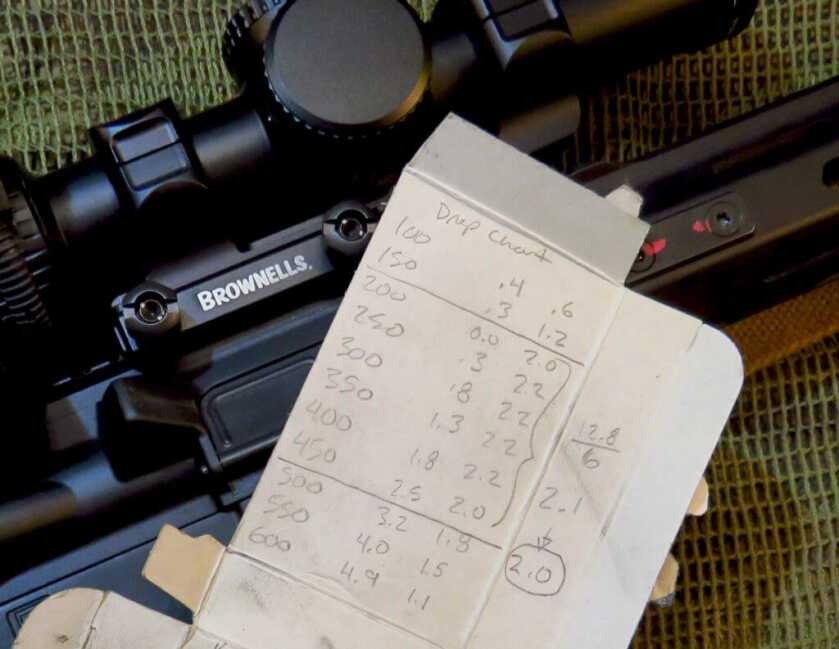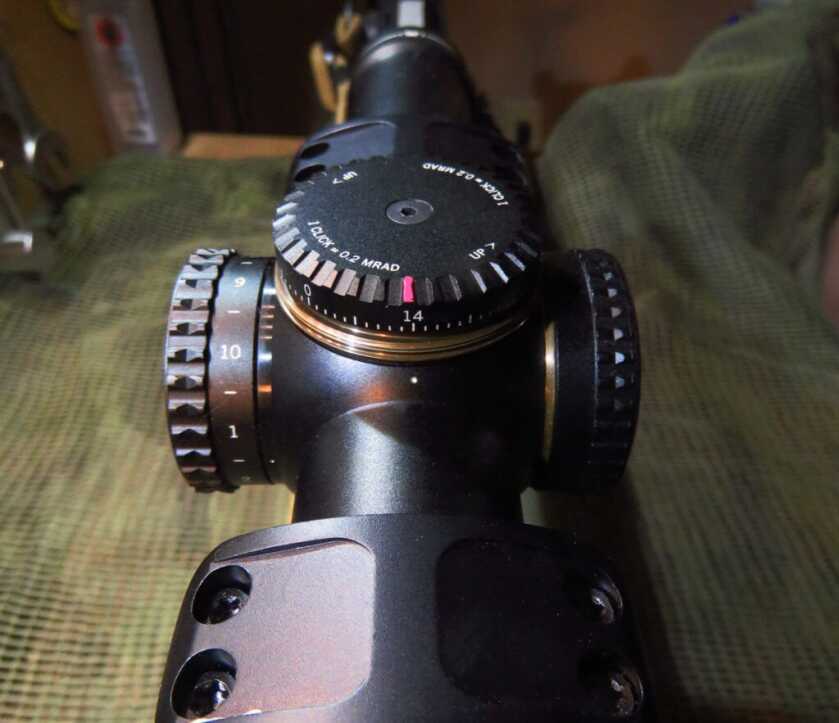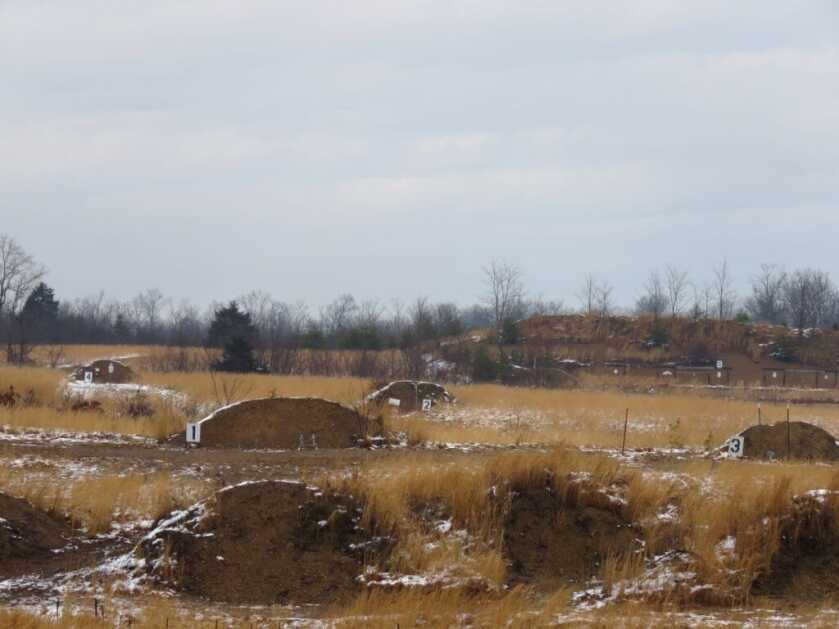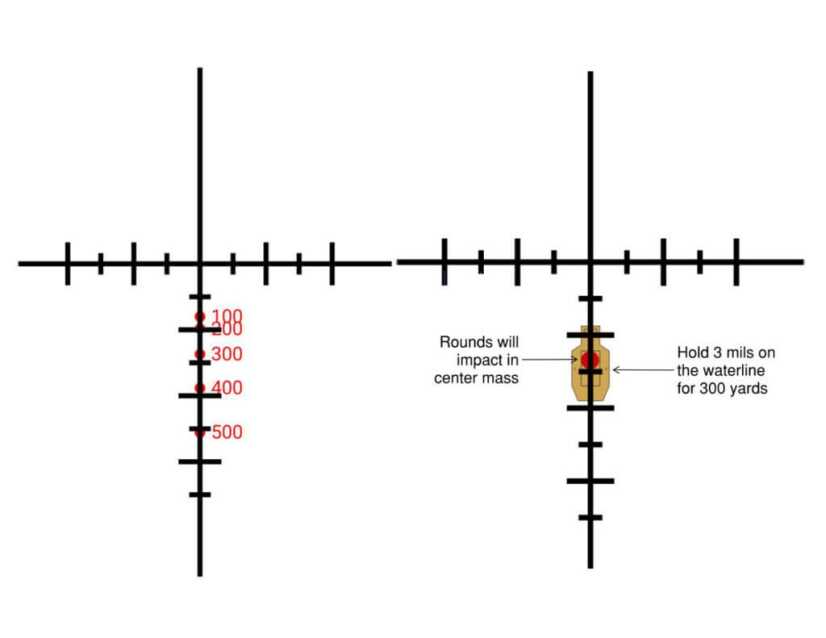Life is pretty fluid and in the shooting world that can mean you have a very short amount of time to engage a target. Realistically, how fast can you work out the dope for a 483 yard shot for one of your rifles just from memory? One technique I’d like to discuss can be used in a couple of different ways to help work out elevation holds for a rifle. This isn’t your granddaddy’s point-blank range methods, however.
Speed Drop
Speed Drop is taught by a company named Accuracy 1st that is a method that provides fast, accurate elevation holds using a mil reticle. The method can turn a regular mil-based reticle into a quasi-BDC reticle for mid-range shooting, but it’s not voodoo. The caveat though is that it can only be used with mil-based reticles, it won’t cross translate to MOA.
Getting Set Up For Speed Drop
Step One: Write out a drop chart from 100 to 600 yards in 50 yd increments. The max range can be set farther out if so desired. For .223/5.56 and .308 I use a 600 yard max range, for slippier cartridges like 6.5 or 6mm Creedmoor I increase that to 800-900 yards.
Step Two: Convert the ranges into decimal form (e.g. 150 = 1.5, 200 = 2.0) and subtract the elevation data from the chart from that number. The remainders will start out low, peak, and then fall back down again. What I’m looking for is a peak value and any values that are ±0.2 mil from there, this establishes my range umbrella. That’s the block of range where my holds will be ± 0.2mils from the true dope. If I need to be more accurate, I’ll only choose the values that are ± 0.1 mils from the peak value but that will reduce my range umbrella.
Step Three: Having established my range umbrella I average the values together to give me the Speed Drop Number (SDN) for that rifle and ammunition combination.
I experimented with Speed Drop using three fundamentally different rifles, a 16” carbine with a 1-6 LPVO shooting 55gr ball, an 18” SPR shooting 77gr SMK’s, and a .308 bolt gun shooting 175 SMK’s.
The first rifle I got set up was my 16” carbine that I use for multi-gun matches, which has a Vortex Optics 1-6 zeroed at 50 yards. I actually worked up the SDN writing it all down on the inside of an empty ammo box out on the range.

The actual SDN value turned out to be 2.1; however, since the optic has 0.2 mil clicks I went with 2.0 to keep the long-range holdovers more accurate. This provided me an effective range of 150-450 yards, although depending on the target size I can push it to right around 500 yards. That being said, 450 yards is about as far as I’d want to push a 55gr FMJ projectile anyway.
Putting Speed Drop To Use
The easiest way I found to use Speed Drop is to apply it to the scope turret, dialing below zero by the value of the SDN. In effect, I’m turning my normal mil-based reticle into a BDC reticle where the full mil marks equal the range to the target.

To put Speed Drop to the test, I took advantage of a target array left over from a previous match with targets laid out from 160 to 474 yards.

With the Speed Drop applied to the turret my holds were super simple and came out as below:

To be honest, I thought I would have to forcibly get used to holding so far over a target but that actually turned out to not be the case. Transitioning from target to target I realized that I was no longer thinking like “That’s the 318 yard target, ok hold .9 mils”, I started to see it as “318 yard target, hold 3.2 mils” and so on. Using this method felt very quick and it was plenty accurate enough to get hits on those practically sized targets.

Another way that Speed Drop can be used is to subtract the SDN from the range to get the elevation data for that shot, which can be dialed onto the scope or held in the reticle. This technique works best with rifles zeroed at 100 yards so I used my 18” SPR with an SDN of 1.8 shooting IMI Razor Core match ammunition. Now, there is still a ± 0.2mil accuracy tolerance but Speed Drop is about getting fast, accurate impacts not pinpoint precision hits.
Using the same targets from above, I calculated the dope as the following:
T1 and T3 = 160 yds (1.6 – 1.8) = 0.2 mil hold
T3 = 283 yds (2.8 – 1.8) = 1.0 mil hold
T4 = 318 yds (3.2 – 1.8) = 1.4 mil hold
T5 = 474 yds (4.7 – 1.8) = 2.9 mil hold
Compared to the confirmed elevation dope for this gun using data from the Strelok Pro app, I’m within 0.1 mils at each distance.
Speed Drop isn’t just for competition shooting though, it has applications for hunting as well, and depending on the cartridge, effective hits can be made out to long distances.

I used Speed Drop with all three rifles, shooting some of the same targets, and despite each one having a different feel, and shooting different ammo, I was able to get effective hits with each one of them.
Closing Thoughts
Speed Drop isn’t magic, it’s simply finessing the ballistics of the rifle inside the optic therefore its effectiveness is governed by caliber, bullet weight, and muzzle velocity. I was able to sufficiently engage small targets using Speed Drop so for particular types of shooting competitions and hunting situations the ±0.2 mil tolerance wouldn’t be a deal breaker. Given the choice, I’ll go to my Kestrel for dope and dial if I have the opportunity. However, if I can’t, knowing how to use Speed Drop is an effective tool to have on hand.
***Buy and Sell on GunsAmerica! All Local Sales are FREE!***

Good info. By chance is there a Big Book of Acronyms, to keep up with the New proper Grammar.. All the Homemade acronyms is daunting at best to figure your jargon out..